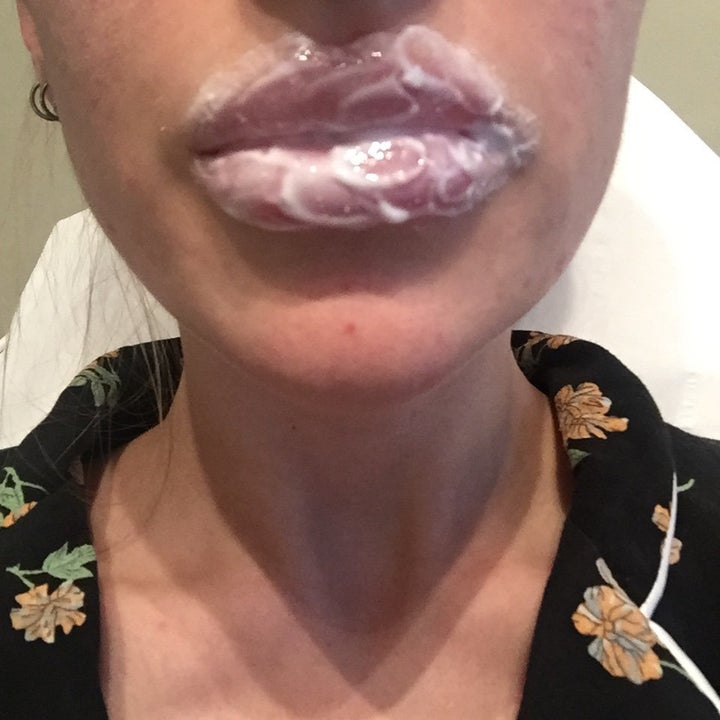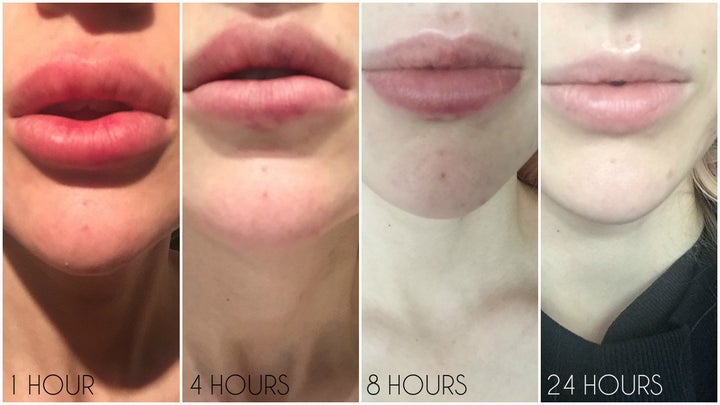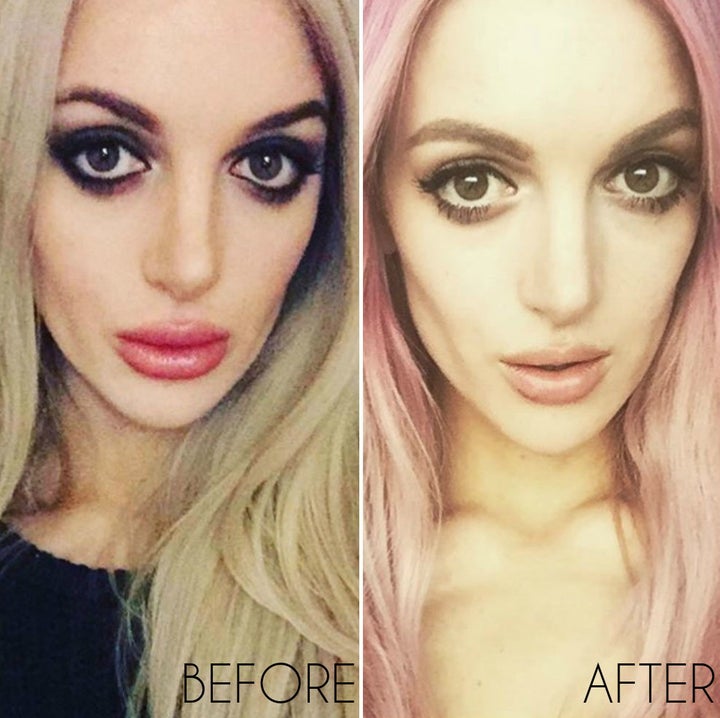Botched lip fillers: with a meteoric rise in augmentations and a lack of quality control, they’re all around us.
The Kylie Jenner-effect may have led to more honesty around having lip augmentations, but when it comes to speaking out about regrets, you can hear a needle drop.
I was certainly guilty, keeping schtum out of pure embarrassment.
Despite last having lip injections (by a doctor who shall remain nameless) over two years ago, the effects weren’t budging. My lips were lumpy, uneven and way too full, with filler spreading up above my top lip. ‘It’s just a waiting game’, I’d tell myself, ‘just try and live with the self-consciousness until they eventually go away’.
It wasn’t until I met Dr Tatiana Lapa, at The Studio Clinic on Harley Street, that I found a solution. And an overnight one, at that.
Dr Lapa told me my situation wasn’t unusual, she’d seen requests for lip filler removal double in the past year.

Thankfully, if you’ve had hyaluronic acid (HA) fillers - the most common type, including Restylane, Juvéderm and Teosyal - they can be completely dissolved.
“HA is a natural component of the skin and is naturally broken down by enzymes in the skin,” Dr Lapa explained.
“We can speed this process up by injecting more of the same enzyme, called hyaluronidase, into the skin - which breaks down HA within a matter of hours.”
With my HA fillers lasting much longer than the six months the doctor claimed they would, and having tried - and failed - using daily massage to break them down myself, I was keen to try it.

Dr Lapa applied a numbing cream to both of my lips before injecting them with the hyaluronidase. The whole process was completely painless, took just 15 minutes, and left me wondering why on earth I hadn’t done it sooner.
There is a possible risk of having a severe allergic reaction to the dissolving enzyme (thankfully I did not), so it’s essential your practitioner carries out a patch test on your arm first and is equipped to deal with any adverse effects.
Initially my lips doubled in size due to the hyaluronidase fluid, but when I woke up the next morning everything was gone, dissolved, poof! The only trace I’d ever changed my appearance was a slight crescent-shaped bruise on my lower lip.
Despite seriously disliking how my over-filled lips looked, seeing my natural mouth again was a huge shock. It had been almost 10 years since I’d changed it.
My heart was set on a plumping procedure aged 12. Flicking through the pages of glossy fashion magazines, I began to notice every single model and ‘attractive’ celebrity had something I did not: full, pouty lips.
Fast forward a few more years and there I was: freshly-turned 18 and lips freshly-filled at the dermatologist I’d been seeing for my acne (unlike Kris Jenner, my mother refused to sign the parental waiver to let me do it any sooner).
According to Dr Lapa, my actions (including bringing in celebrity photos for reference) should have been a “red flag” to my doctor.
She warns that decisions to undergo cosmetic procedures should never be based on wanting to look like someone else, or to achieve an unrealistic aesthetic. Something I just didn’t understand as a teenager.
Let me make it as clear as all the expensive gel injected into my lips: I’m also now painfully aware that - as an able-bodied, white, cis female - I didn’t exactly have it hard when it comes to body image. Unlike countless young girls, at least I was able to see some of myself represented in ‘idealised’ media images.

Over the years, I did encounter some (in hindsight, very wise) doctors who refused to inject me due to my young age, others were too expensive for my student budget.
So I started going for cheaper and less reputable options, and that’s where it all went wrong.
Dr Lapa worryingly told me that anyone can train to inject fillers, including those with no medical or nursing training.
“That makes my hairs stand on end,” she said.
There’s also no compulsory accreditation for training programmes, meaning practically anyone can set one up. Plus, there’s no compulsory process of registering with a medical body or keeping up-to-date with the latest skills and knowledge.

So how can you tell who to trust? Dr Lapa urges people to check their cosmetic practitioner is registered with a body such as the General Medical Council for doctors, the Nursing Medical Council for nurses, or General Dental Council for dentists.
She also recommends using clinics that have voluntarily signed up with Save Face - an organisation that checks practitioners’ training certificates, insurance details and premises to ensure they meet specific criteria. Save Face also has a facility for patients to leave clinic reviews.
The most important thing I gained from years of lip fillers was (quelle surprise) not my delusional teenage aspiration to instantaneously transform into a social butterfly and the object of everyone’s desires, but knowledge of how important it is to pick your doctor wisely.
That, and the age-old adage: feeling confident makes you more attractive than anything else ever could.
If you proudly flaunt your lip fillers - great. If you love your naturally petite or full lips - brilliant. But if you’re self conscious about having a botched lip job, like me - just fix it. I promise you won’t regret it.
